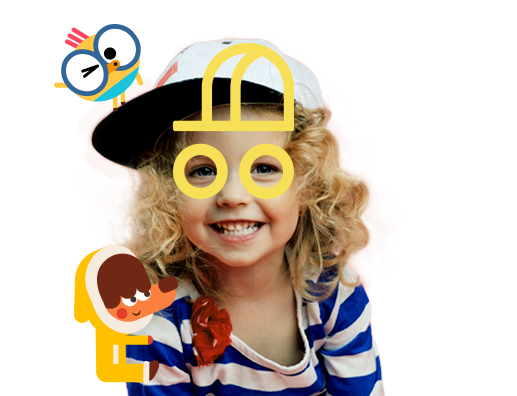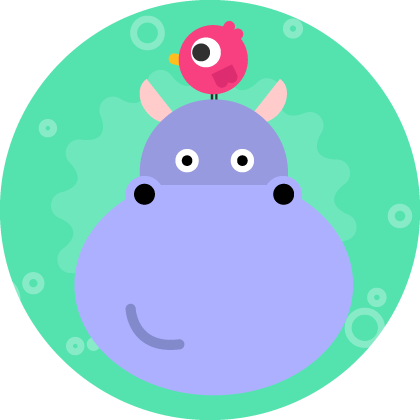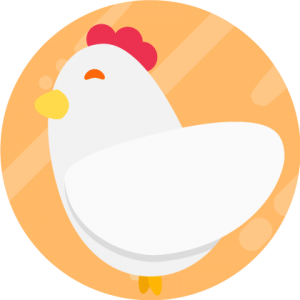From a young age, children get used to doing comparisons. Through these, children are able to identify their favorite toys, food, shoes, or even places. All of this is achieved using comparatives and superlatives, which help the little ones contrast and sort out the things that they interact with on a daily basis.
These type of words make communication easier by establishing differences between certain groups of objects, people, or animals, giving more information about them. However, these two types of adjectives are not the same.
What are comparatives?
Comparative adjectives are adjectives used to compare characteristics between two nouns, highlighting their differences (these could be objects, people, or animals) based on a shared characteristic (size, color, height, velocity, etc).
Another example of this would be “the red pencil is bigger than the blue pencil”. In this case, two different colored pencils are being compared based on their sizes, and the word “bigger” is the comparative adjective used for this.

What are superlatives?
When more than two nouns are being compared, it’s time to use superlative adjectives. These are adjectives that refer to the highest degree of difference between the nouns that are being compared.
For example, in a group of boxes of different sizes, one will be “the biggest ” box and one will be “the smallest ” one.

When are comparatives and superlatives used?
Comparatives and superlatives, as mentioned before, are used when doing a comparison between two things (comparatives) or when a group of things is being compared and there’s the need to mention the items within the group that are in the extremes (superlatives).
To make a comparison between two nouns using comparative adjectives, this is the structure that needs to be followed:
noun (as a subject) + verb + comparative adjective + than + noun (as an object). Brazil is bigger than Spain.
Cars move faster than bicycles.
On the other hand, when using superlatives in a sentence, the structure to be used is this one:
noun (as a subject) + verb + the + superlative adjective + noun (as an object) The blue tower is the largest building in the city. Everest is the highest mountain on the planet.
Rules for forming comparatives and superlatives
Now that the structure for each type of adjectives has been clarified, it’s important to mention that there are certain rules to make these type of words.
Both comparatives and superlatives are adjectives with a twist. Forming comparative or superlative adjectives is quite simple, though.
First, these can be divided into two groups: regular and irregular comparatives and superlatives. Depending on which group the adjective is, different rules apply.
Regular comparatives and superlatives
Forming regular comparatives and superlatives is a matter of knowing how many syllables are there in the original adjective.
When the adjective has one syllable
In this case, the comparative is formed by adding the ending -er to the word, while the superlative is formed by adding “the ” + -est to the end of the word. Here’s an example with the word “old”:
Adjective: “old” Comparative: “older ” Superlative: “the oldest ”.
If the adjective already ends with an -e , then it’s just necessary to add -r for the comparative and -st for the superlative.
Adjective: “large” Comparative: “larger ” Superlative: “the largest ”
There’s a special case for one syllable adjectives. When these are words with the following structure: consonant + vowel + consonant (such as “big”), the last consonant has to be doubled when forming both the comparative and the superlative adjective.
Adjective: “big” Comparative: “bigger ” Superlative: “the biggest ”

When the adjective has two syllables
In these cases, the comparative is formed by using the word “more ” in front of the adjective. To form superlatives with two-syllable adjectives it must be used the words “the ” + “most ”. These words always go before the adjective in the sentence.
Adjective: “precious” Comparative: “more precious” Superlative: “the most precious”
When the adjective has two syllables and ends with -er, -le or -ow
In this particular case, there are two options. In the first one, the comparative adjectives can be formed just as in the one syllable case: by adding -er for comparatives or “the ” + -est for superlatives at the end of the word.
However, there is a second option, which is to add “more ” or “the ” + “most ” in front of the adjective to form the comparative and superlative respectively. Usually, the second option is more common but both are correct.
Adjective: “tender” Comparative: “tenderer ” or “more tender” Superlative: “tenderest ” or “the most tender”

When the adjective has two syllables and ends in the letter -y
When the adjective ends with the letter -y then the comparative and superlative is formed just as in the first case for adjectives with one syllable by adding “the ” plus -er and -est respectively and changing the -y to an -i .
Adjective: “happy” Comparative: “happier ” Superlative: “the happiest ”

When the adjective has three syllables or more
In this case, the only option to form the comparative is adding the word “more ” for comparatives and “the ” + “most ” for superlatives.
Adjective: “important” Comparative: “more important” Superlative: “the most important”

Exceptions ?
There are certain adjectives that don’t behave like the rest when forming comparatives and superlatives. These irregular adjectives are exceptions since they don’t follow the regular rules. Adjectives like these form irregular comparatives and superlatives.
Irregular comparatives and superlatives
These type of comparatives and superlatives are called irregular because they have totally different forms as the original adjective, whether this has one or more syllables.
Take a look of some of the most common irregular comparatives and superlatives:
Adjective – Comparative – Superlative
bad ? worse ? the worst
badly ? worse ? worst
far ? farther ? the farthest (distance)
far ? further ? the furthest (extent)
good ? better ? the best
late ? later ? the latest/last
less ? lesser ? the least
little ? less ? the least (amount)
many ? more ? most
much ? more ? most
well ? better ? best
Expressing similarities in English
A part of doing comparisons is talking about similarities. To talk about things that share similar characteristics in English, this is the structure to be followed:
as + adjective + as
My house is as big as yours. Lisa is as tall as Elliot.

Examples of comparatives and superlatives
I like the red shirt, but the blue one is nicer than it.
Cowy is younger than Lisa, but Elliot is the oldest of the three friends.
Cowy has many apples, but he has even more grapes than apples.
Which one is your house? Is the farthest down the road.
Dogs are ones of the friendliest pets.
Getting bad grades is worse than not going to the park.
This house is bigger than the house around the corner.
Tennis is as fun as soccer.
This is the most exciting game I’ve ever seen.
Elliot’s fur is not as long as Lisa’s.
Baby Bot’s cookies taste better than mines.
The book was more entertaining than the movie.
Want to try learning all of this grammar through games, songs and interactive activities? Download the Lingokids app and discover the world of playlearning™ – a safe, game-based learning experience which takes kids beyond the classroom.










